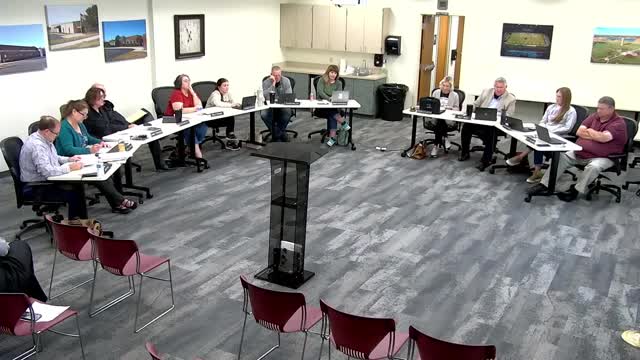School board approves new Spanish and advanced art courses adoption
October 14, 2024 | Paola, School Boards, Kansas
This article was created by AI summarizing key points discussed. AI makes mistakes, so for full details and context, please refer to the video of the full meeting. Please report any errors so we can fix them. Report an error »

During the recent Paola USD 368 School Board meeting held on October 14, 2024, significant discussions centered around the adoption of new courses and the implementation of a training stipend for teachers. These decisions are poised to enhance educational offerings and support staff development within the district.
One of the key proposals was the adoption of new courses, specifically Spanish core and advanced art classes at the high school level. The board recognized the need for these additional courses to accommodate students seeking advanced studies. The approval of these courses is expected to enrich the curriculum and provide students with more opportunities to engage in higher-level learning. The board unanimously approved the motion to adopt these new courses, signaling a commitment to expanding educational resources for students.
In addition to course adoption, the meeting addressed the upcoming requirement for elementary staff to demonstrate proficiency in the science of reading. Starting July 1, 2028, teachers will need to show their knowledge through various testing options or coursework. To support this transition, the district proposed a stipend program for teachers who complete the required letters training. This initiative aims to incentivize professional development and ensure that educators are well-equipped to teach reading effectively.
The proposed stipend includes $750 for each year of training, totaling $1,500 over two years. This financial support is designed to acknowledge the time and effort teachers will invest in their professional growth. Furthermore, the training can also lead to college credit, which may assist teachers in advancing their positions on the salary schedule.
Overall, the discussions at the Paola USD 368 School Board meeting reflect a proactive approach to enhancing educational quality and supporting teachers. By adopting new courses and investing in staff training, the district is taking significant steps to improve student learning outcomes and foster a more skilled teaching workforce. As these initiatives move forward, the community can anticipate a positive impact on both students and educators in the coming years.
One of the key proposals was the adoption of new courses, specifically Spanish core and advanced art classes at the high school level. The board recognized the need for these additional courses to accommodate students seeking advanced studies. The approval of these courses is expected to enrich the curriculum and provide students with more opportunities to engage in higher-level learning. The board unanimously approved the motion to adopt these new courses, signaling a commitment to expanding educational resources for students.
In addition to course adoption, the meeting addressed the upcoming requirement for elementary staff to demonstrate proficiency in the science of reading. Starting July 1, 2028, teachers will need to show their knowledge through various testing options or coursework. To support this transition, the district proposed a stipend program for teachers who complete the required letters training. This initiative aims to incentivize professional development and ensure that educators are well-equipped to teach reading effectively.
The proposed stipend includes $750 for each year of training, totaling $1,500 over two years. This financial support is designed to acknowledge the time and effort teachers will invest in their professional growth. Furthermore, the training can also lead to college credit, which may assist teachers in advancing their positions on the salary schedule.
Overall, the discussions at the Paola USD 368 School Board meeting reflect a proactive approach to enhancing educational quality and supporting teachers. By adopting new courses and investing in staff training, the district is taking significant steps to improve student learning outcomes and foster a more skilled teaching workforce. As these initiatives move forward, the community can anticipate a positive impact on both students and educators in the coming years.
View full meeting
This article is based on a recent meeting—watch the full video and explore the complete transcript for deeper insights into the discussion.
View full meeting
